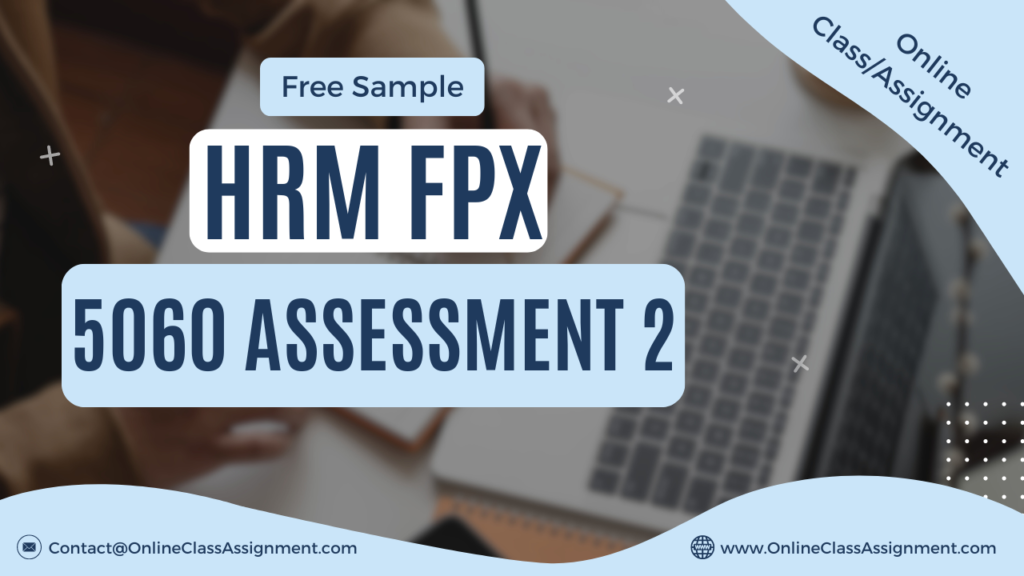
HRM FPX 5060 Assessment 2 Job Analysis and Competency Model
Student Name
Capella University
HRM-FPX5060 Sourcing and Managing Talent in the Workplace
Prof. Name
Date
Overview:
A thorough job analysis encompasses various components to formulate an accurate recommendation. This includes reviewing current employee job responsibilities, researching and examining sample job descriptions online or offline for similar roles, analyzing the duties and responsibilities essential for the position, and articulating the crucial outcomes or contributions required (Heathfield, 2020). This process, known as competency modeling, involves identifying the essential competencies for specific jobs to meet organizational goals and gain a competitive advantage. Competency models serve as the foundation for vital human resource functions such as recruitment, hiring, training, development, and performance management. The ONet, an online job classification system, proves valuable in conducting job analyses. This paper will utilize the ONet system to discuss the most effective method for creating a job analysis for a Pharmacist role.
Competency Model for a Pharmacist Role:
Pharmacists play a pivotal role in both healthcare systems and retail pharmacy locations. Their responsibilities include filling and labeling prescriptions, providing drug-related information to various stakeholders, supervising pharmacy technical support staff, and advising healthcare practitioners on medication selection, dosage, interactions, and side effects. Success in this role requires competencies such as reading comprehension, active listening, critical thinking, instructional skills, and the ability to monitor and assess performance. The overarching goal for pharmacists is to ensure the accurate dispensing of medications as prescribed by healthcare professionals.
To recruit and retain successful pharmacists, recruitment partners must fully comprehend the role and its required competencies. Competency modeling, as a job analysis method, aids in identifying these necessary skills (Heneman, Judge & Kammeyer-Mueller, 2019). General competencies are established at the organizational or strategic level by management in collaboration with Human Resources, aligning with an organization’s strategic business goals. Competency models offer clear direction on performance expectations when linked to an organization’s desired results. One method employed by HR professionals is the use of the Occupational Information Network (O*NET) to research and gather information about job tasks (Jeanneret & Strong, 2003).
HRM FPX 5060 Assessment 2 Job Analysis and Competency Model
Based on information obtained from O*NET, pharmacists should possess high integrity, attention to detail, dependability, and the ability to tolerate stress. Due to the specialized nature of the role, a “one-size-fits-all” approach is inadequate. Pharmacists must be graduates of accredited Schools of Pharmacy, licensed to practice in their respective states, and equipped to handle the physical demands of the role. Communication skills are crucial, involving effective interaction with various stakeholders, and proficiency in areas such as medicine, mathematics, chemistry, biology, and advanced technology skills.
Therefore, the main competencies for pharmacists should include:
Ability to Maintain Composure: Remaining calm during high-stress situations and minimizing the impact of uncertainty.
Decision Making: Making decisions using data and science to ensure a high level of accuracy.
Problem Solving/Critical Thinking: Analyzing information and providing viable solutions or suggesting alternatives.
Communication: Presenting information verbally in a clear and concise manner, including active listening skills and the ability to respond appropriately to others’ needs.
Competencies such as communication and the ability to maintain composure can be trainable traits, aligning with the organizational strategy related to customer/patient experience. Decision-making and critical thinking skills should be assessed using a program to ensure candidates for this role possess these essential skills. Additionally, the job description should clearly outline the physical requirements of the position.
References:
Heathfield, S. M. (2020). [Title of the Source]. Publisher.
Heneman, H. G., III, Judge, T. A., & Kammeyer-Mueller, J. (2019). Staffing organizations (9th ed.). New York, NY: McGraw-Hill Education.
Jeanneret, P. R., & Strong, M. H. (2003). Linking ONET job analysis information to job requirement predictors: An ONET application. Personnel Psychology, 56(2), 465–489.
Get Capella University Free MBA Samples
HRM FPX 5025
HRM FPX 5122
HRM FPX 5310
LEAD FPX 5210
MBA FPX 5002
LEAD FPX 5220
MBA FPX 5006
MBA FPX 5008
